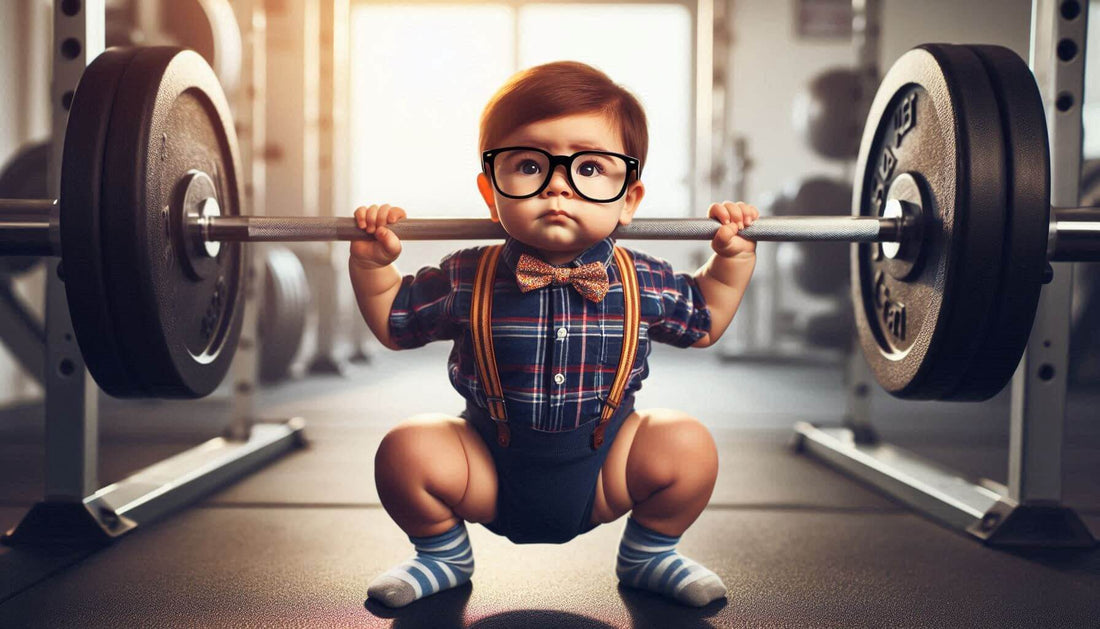
Will Strength Training Stunt Your Child's Growth? Debunking The Myth
For decades, a well-intentioned but outdated warning has echoed through gyms, doctors' offices, and playgrounds: "Don't let your kid lift weights - it will stunt their growth."
It's a concept that, on the surface, seems to make sense. But when we examine the actual scientific evidence, and apply some basic logic, a very different - and more encouraging - picture emerges.
This article will respectfully address this common concern, separate fact from fiction, and highlight why, when done correctly, strength training is not only safe for children and adolescents but can be profoundly beneficial for their long-term health.
Where Did The Myth Come From? Understanding Growth Plates
The myth stems from a legitimate concern about a child’s growth plates (also known as epiphyseal plates).
These are areas of developing cartilage tissue near the ends of long bones (like the femur or humerus). They are the last part of a child's bones to harden (ossify) and are indeed more vulnerable to injury than the surrounding bone and tissue.
The outdated theory suggested that the stress from lifting weights could impact these growth plates and interfere with a child's growth.
While growth plates can become acutely injured from an acute accident or trauma, there's no evidence to suggest that a properly supervised, well-designed strength training program negatively impacts growth or final adult height.
And from purely a logical standpoint, resistance training is really just the process of formally loading up the body with weight. To suggest that a person of any age can't tolerate load suggests that we shouldn't be lifting, carrying, or moving things - which we know just isn't true.
What Does the Science Actually Say? The Expert Consensus
The leading authorities in sports medicine and exercise science have thoroughly examined this question. Their conclusions are unanimous and clear.
The National Strength and Conditioning Association (NSCA), the world’s leading organization on strength and conditioning research, has a definitive position statement.
After reviewing decades of evidence, they conclude:
"Research has indicated that strength training, when appropriately supervised and prescribed, is a safe and beneficial method of exercise for children and adolescents."
Read the NSCA's Official Position Statement on Youth Resistance Training here.
This stance is strongly supported by other major bodies:
- The American Academy of Pediatrics (AAP) states that "a properly designed and supervised resistance training program is safe for children and adolescents." [Source]
- The American College of Sports Medicine (ACSM) and the National Academy of Sports Medicine (NASM) also promote the benefits of youth strength training when appropriately prescribed.
The research shows that the forces placed on bones during strength training are actually osteogenic - meaning they stimulate bone growth and increase bone density, leading to a stronger, more resilient skeleton. This is a critical benefit that can help prevent fractures both now and later in life from conditions like osteoporosis.
The Real Benefits of Youth Strength Training (Beyond the Myth)
Once we feel comfortable leaving the stunted growth myth alone, we can begin to focus on the incredible, evidence-based benefits of letting kids get strong.
A well-designed program can provide:
- Improved Sports Performance: Enhanced strength, power, speed, and coordination translate directly to the sports field, court, or pool.
- Reduced Risk of Sports-Related Injuries: Stronger muscles, tendons, and ligaments act as better shock absorbers and joint stabilisers. The NSCA notes that participation in a strength training program can reduce the risk of injury in youth sports by up to 66% and overuse injuries by 50%.
- Enhanced Bone Mineral Density: The stress of lifting weights signals the body to build stronger bones, creating a foundation for lifelong skeletal health.
- Improved Mental Health and Self-Esteem: Mastering new skills and getting stronger provides a tremendous confidence boost and can improve body image in a positive, function-oriented way.
- Establishment of Lifelong Healthy Habits: Teaching kids to appreciate what their bodies can do rather than just how they look fosters a positive relationship with fitness that can last a lifetime.
The Golden Rule: Safety, Supervision, and Technique
The key phrase in all the expert statements is "properly designed and supervised."
This is where the responsibility lies with coaches and parents. The goal is not to lift maximum weight but to build a foundation of movement excellence.
The pillars of safe youth strength training are:
- Qualified Supervision: An adult with expertise must be present to teach, spot, and provide feedback.
- Technique Over Weight: The primary focus must always be mastering perfect form with little to no load before progressively adding weight. Bodyweight exercises (like push-ups, squats, and lunges) are an excellent starting point.
- Appropriate Progression: Increases in weight, if any, should be small, gradual, and based on the child's technical competency, not an arbitrary number.
- A Positive Environment: Training should be fun, engaging, and focused on personal improvement, not competition or comparison.
Conclusion: Empower, Don't Fear
The fear that strength training will stunt a child's growth is a medical myth that has been busted by decades of research, and supported by basic logic and perspective. It is a belief that needs retiring to make room for a more informed and empowering approach to youth fitness.
When we replace fear with knowledge, we see that a safe, supervised strength training program is not a danger to our children. Instead, it is a powerful tool to build healthier, stronger, more confident, and more injury-resilient kids.
By focusing on proper technique and qualified guidance, we aren't risking their growth - we're investing in their lifelong health and well-being.
References & Further Reading:
- National Strength and Conditioning Association (NSCA) Position Statement: Lloyd, R. S., et al. (2010). Position statement on youth resistance training.
- American Academy of Pediatrics (AAP): Stricker, P. R., et al. (2020). Resistance Training for Children and Adolescents. Pediatrics, 142(6).
- A systematic review on injury rates: Lesinski, M., et al. (2016). Effects and dose-response relationships of resistance training on physical performance in youth athletes: a systematic review and meta-analysis. British Journal of Sports Medicine, 50(13).
